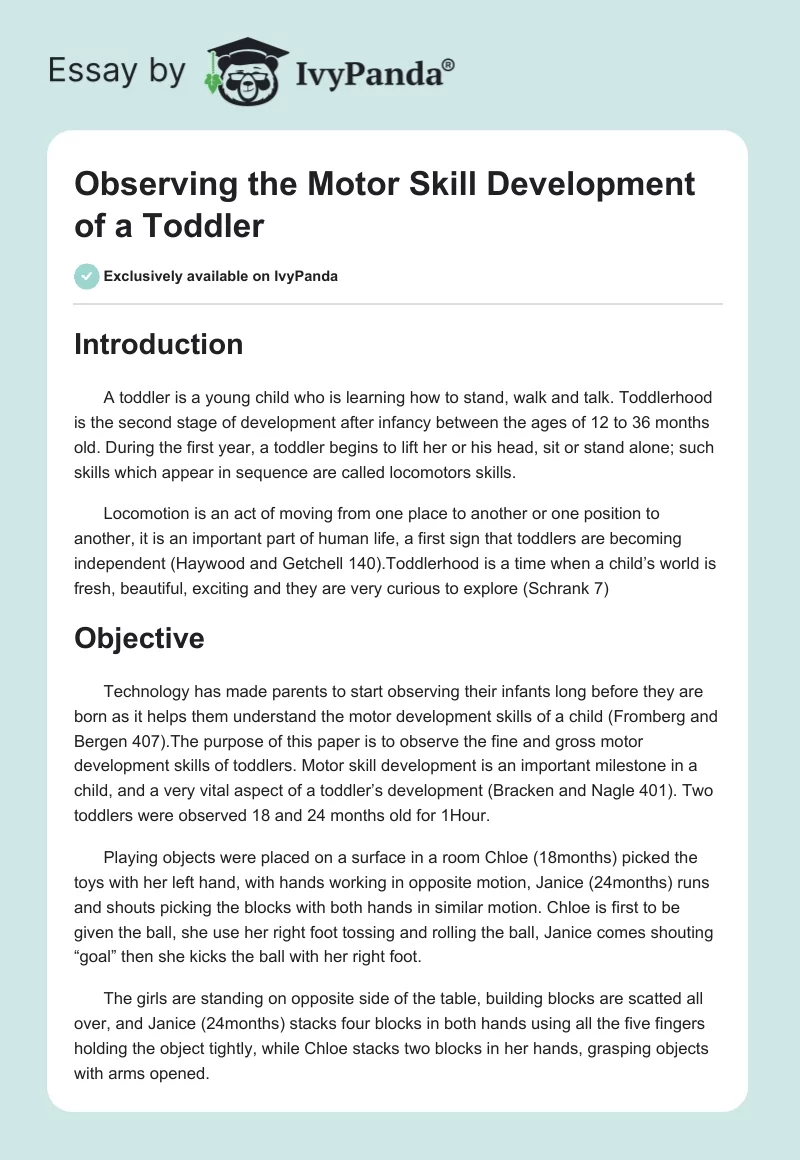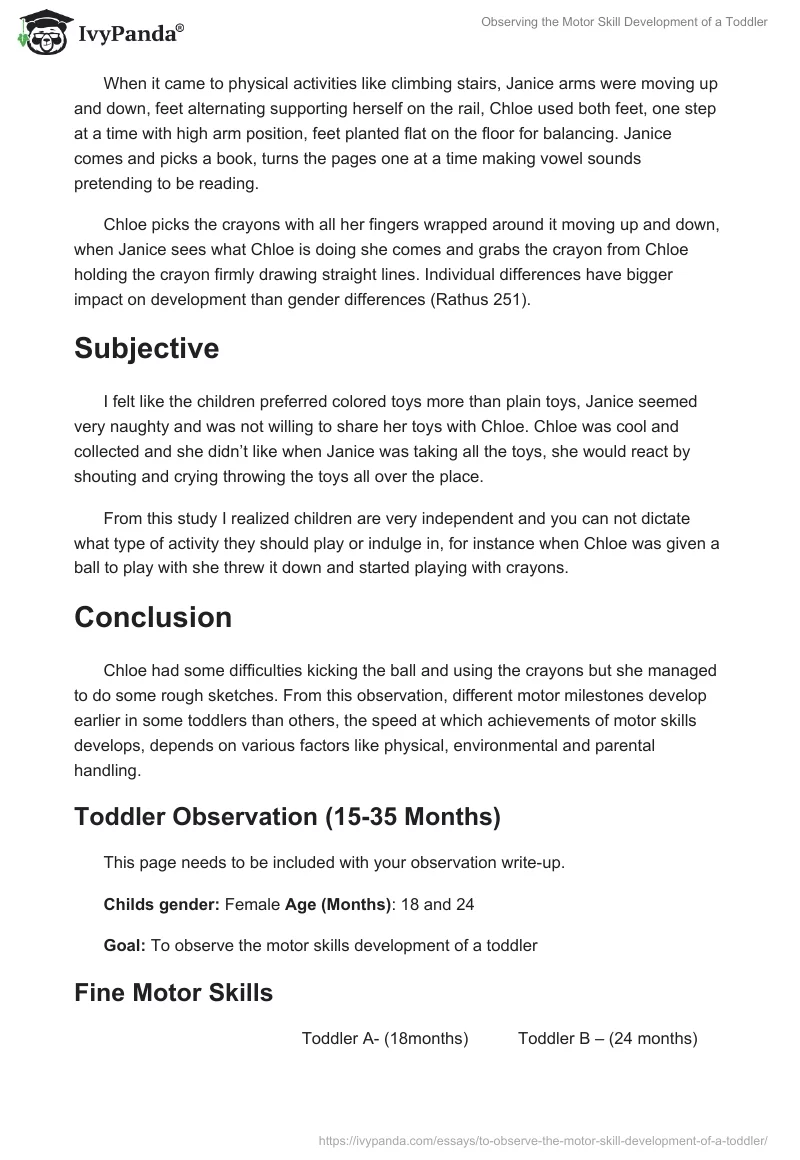Introduction
A toddler is a young child who is learning how to stand, walk and talk. Toddlerhood is the second stage of development after infancy between the ages of 12 to 36 months old. During the first year, a toddler begins to lift her or his head, sit or stand alone; such skills which appear in sequence are called locomotors skills.
Locomotion is an act of moving from one place to another or one position to another, it is an important part of human life, a first sign that toddlers are becoming independent (Haywood and Getchell 140).Toddlerhood is a time when a child’s world is fresh, beautiful, exciting and they are very curious to explore (Schrank 7)
Objective
Technology has made parents to start observing their infants long before they are born as it helps them understand the motor development skills of a child (Fromberg and Bergen 407).The purpose of this paper is to observe the fine and gross motor development skills of toddlers. Motor skill development is an important milestone in a child, and a very vital aspect of a toddler’s development (Bracken and Nagle 401). Two toddlers were observed 18 and 24 months old for 1Hour.
Playing objects were placed on a surface in a room Chloe (18months) picked the toys with her left hand, with hands working in opposite motion, Janice (24months) runs and shouts picking the blocks with both hands in similar motion. Chloe is first to be given the ball, she use her right foot tossing and rolling the ball, Janice comes shouting “goal” then she kicks the ball with her right foot.
The girls are standing on opposite side of the table, building blocks are scatted all over, and Janice (24months) stacks four blocks in both hands using all the five fingers holding the object tightly, while Chloe stacks two blocks in her hands, grasping objects with arms opened.
When it came to physical activities like climbing stairs, Janice arms were moving up and down, feet alternating supporting herself on the rail, Chloe used both feet, one step at a time with high arm position, feet planted flat on the floor for balancing. Janice comes and picks a book, turns the pages one at a time making vowel sounds pretending to be reading.
Chloe picks the crayons with all her fingers wrapped around it moving up and down, when Janice sees what Chloe is doing she comes and grabs the crayon from Chloe holding the crayon firmly drawing straight lines. Individual differences have bigger impact on development than gender differences (Rathus 251).
Subjective
I felt like the children preferred colored toys more than plain toys, Janice seemed very naughty and was not willing to share her toys with Chloe. Chloe was cool and collected and she didn’t like when Janice was taking all the toys, she would react by shouting and crying throwing the toys all over the place.
From this study I realized children are very independent and you can not dictate what type of activity they should play or indulge in, for instance when Chloe was given a ball to play with she threw it down and started playing with crayons.
Conclusion
Chloe had some difficulties kicking the ball and using the crayons but she managed to do some rough sketches. From this observation, different motor milestones develop earlier in some toddlers than others, the speed at which achievements of motor skills develops, depends on various factors like physical, environmental and parental handling.
Toddler Observation (15-35 Months)
This page needs to be included with your observation write-up.
Childs gender: Female Age (Months): 18 and 24
Goal: To observe the motor skills development of a toddler
Fine Motor Skills
Gross Motor Skills
Works Cited
Bracken A. Bruce and Nagle Jude Richard, Psycho education assessment of preschool children. New Jersey: Lawrence Eribaum Associates Inc., 2007.
Fromberg P. Doris and Bergan Doris, Play from birth to twelve & beyond: contexts, perspective, meaning. New York: Garland Publishing, 1998
Haywood Kathleen and Getchell Nancy. Life span motor development. 5 Edn. Illinois: Human Kinetics, 2008.
Rathus A. Spencer, Voyagers in development. 4 Edn. New York: Cengage Learning, 2010
Schrank Rita, Toddlers learn by doing things: toddler activities and parents/teacher activity log.Atlanta: Humanics Publishing Group,1987.


